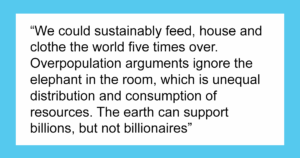Unlock Hidden Truths: 15 Surprising Secrets to Instantly Decode Anyone
Ever wish you could read people’s minds—just for a day? (Preferably during family reunions or those painfully awkward office meetings where everyone’s smiling but you know somebody just sent a passive-aggressive email.) The truth is, we’re all living in a human library—only, most of the books feel like they’re written in a language we have to decode on the fly. Body language here, a raised eyebrow there, a suspiciously speedy text reply at midnight… No wonder communication feels like sugar-free chocolate cake: technically the same, but not quite satisfying.
If you’ve ever wanted a crash course in understanding the strange, silent signals we send, you’re in exactly the right place . There’s a science—and, let’s be honest, a bit of magic—to reading the world around us. Let’s have some fun, laugh at the quirks, and unlock the hidden meaning behind those shared looks, telling silences, and wardrobe choices (yes, your neon socks are definitely saying something) . Ready to discover how to read people like you’ve got insider trading knowledge on human nature? I promise you won’t need a crystal ball—just sharp eyes, an open mind, and maybe the courage to ask, “Did you really just mean to ‘like’ my vacation photo at 3am?” LEARN MORE
Human behavior is fascinating. At times, it feels as if everyone around us is an open book—until you realize the book is written in Cantonese and you only speak Spanish. Reading people isn’t a science experiment, but it does involve a little effort, observation, and practice. We may not be mind readers (yet), but honing the skill of understanding others can save you from confusion, awkward missteps, and uneasy friendships. Think about how much easier life could be if you could decode subtle signals like a new processor. Maybe you’d spot a colleague’s frustration before they even utter a word, or you’d understand when someone isn’t thrilled with your idea. Reading people isn’t always straightforward. Some wear their emotions on their sleeves, while others guard their feelings like state secrets. Here’s how you can read people without a psychology diploma or learning to analyze crystal balls.
1. Pay Attention to Facial Microexpressions

Photo Credit: Depositphotos.com.
Microexpressions are like the Snapchat of emotions—quick, unfiltered, and gone in a flash. These tiny, involuntary facial movements, lasting less than a second, can spill someone’s true feelings even when they’re trying to keep a poker face. A brief flicker of anger might sneak out before they slap on a polite smile. The truth is written all over their face—you just have to catch it before it logs off. Want to get good at spotting these emotional slip-ups? Start people-watching during interviews, debates, or any awkward situation where emotions run high. It’s like detective work but for feelings.
2. Listen to Their Tone of Voice

Image Credit: Shutterstock.com.
Words matter, but how they’re said often matters more. The tone of voice can reveal emotions that contradict spoken words. Is their pitch higher than usual? That could signal excitement or nervousness. A monotone delivery might suggest disinterest or fatigue, while a sudden change in volume can indicate frustration or enthusiasm. Context is key here. Someone speaking loudly at a party might be trying to compete with the background noise, not expressing anger. But in quieter settings, vocal shifts are often more deliberate and easier to interpret. Tune into these subtle auditory cues and start picking up on emotional undercurrents that aren’t spelled out.
3. Assess Their Level of Empathy

Image Credit: Shutterstock.com.
Pay attention to how someone reacts in emotionally charged situations. Do they show a genuine understanding of other people’s feelings? Are they compassionate or quick to judge? By gauging their level of empathy, you can gain valuable insights into their emotional intelligence and how they might relate to you in various situations. Individuals with lower empathy might appear indifferent or dismissive, struggling to connect with or recognize others’ emotions.
4. Understand the Power of Silence

Image Credit: Depositphotos.com.
Silence can often speak louder than words. People may fall silent when they’re uncomfortable, thinking deeply, or trying to process emotions. The context of the silence is key—does it occur after a tense comment or during a more relaxed moment? The way someone reacts to silence can help you interpret their emotional state. Are they avoiding a topic or perhaps reflecting on something significant? Paying attention to these moments can reveal hidden emotions or thoughts.
5. Observe How They React to Conflict

Image Credit: Shutterstock.
How someone handles conflict is like a window into their personality and emotional wiring. Do they explode like a microwave burrito, or do they go full-on ghost mode and vanish? Watching how people navigate disagreements can reveal their coping strategies and emotional triggers. Pay attention to their body language, tone, and reactions—it’s like decoding their secret emotional playbook. You might just learn if they’re the calm diplomat or the ticking time bomb in tense moments.


















Post Comment